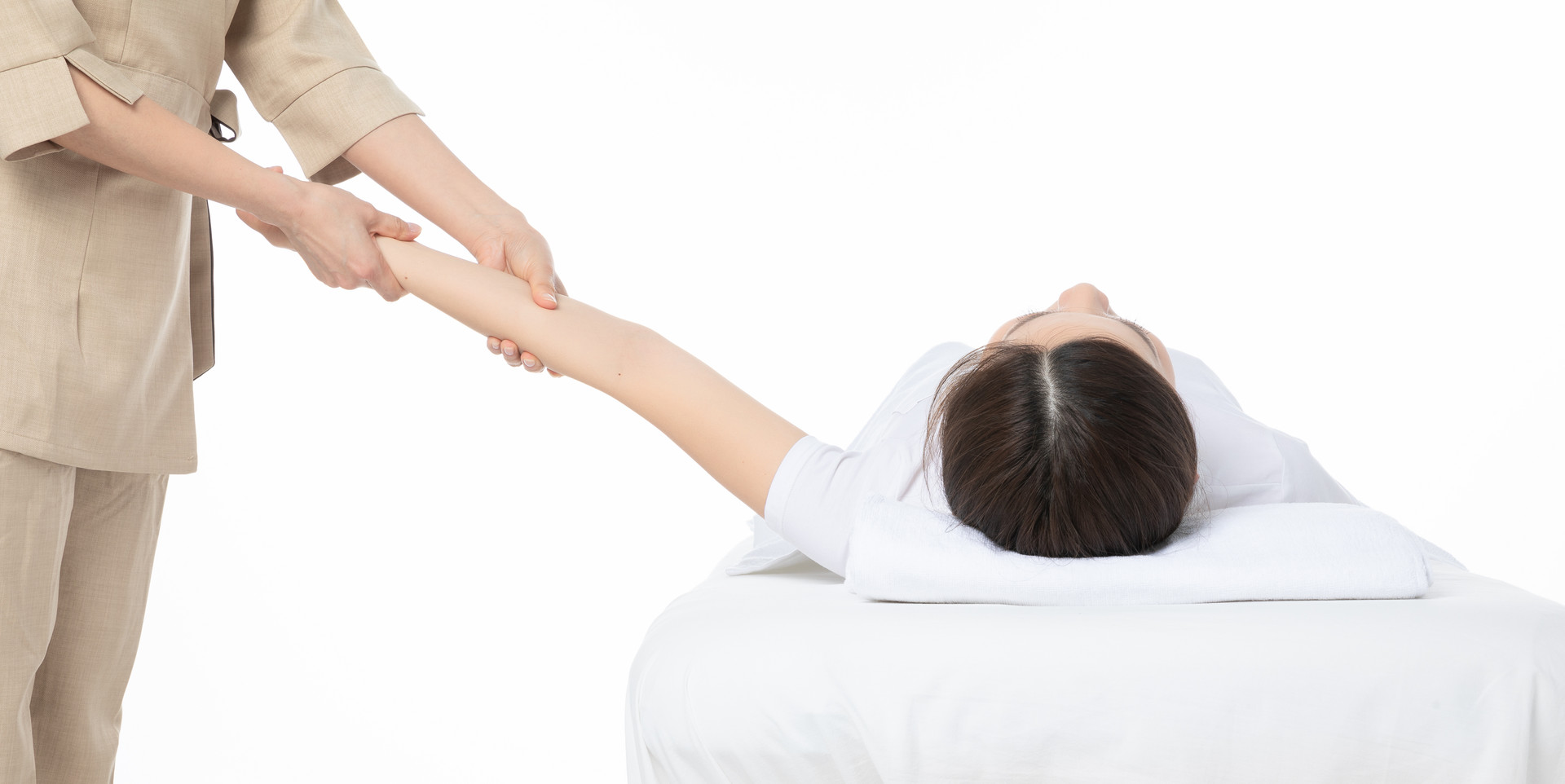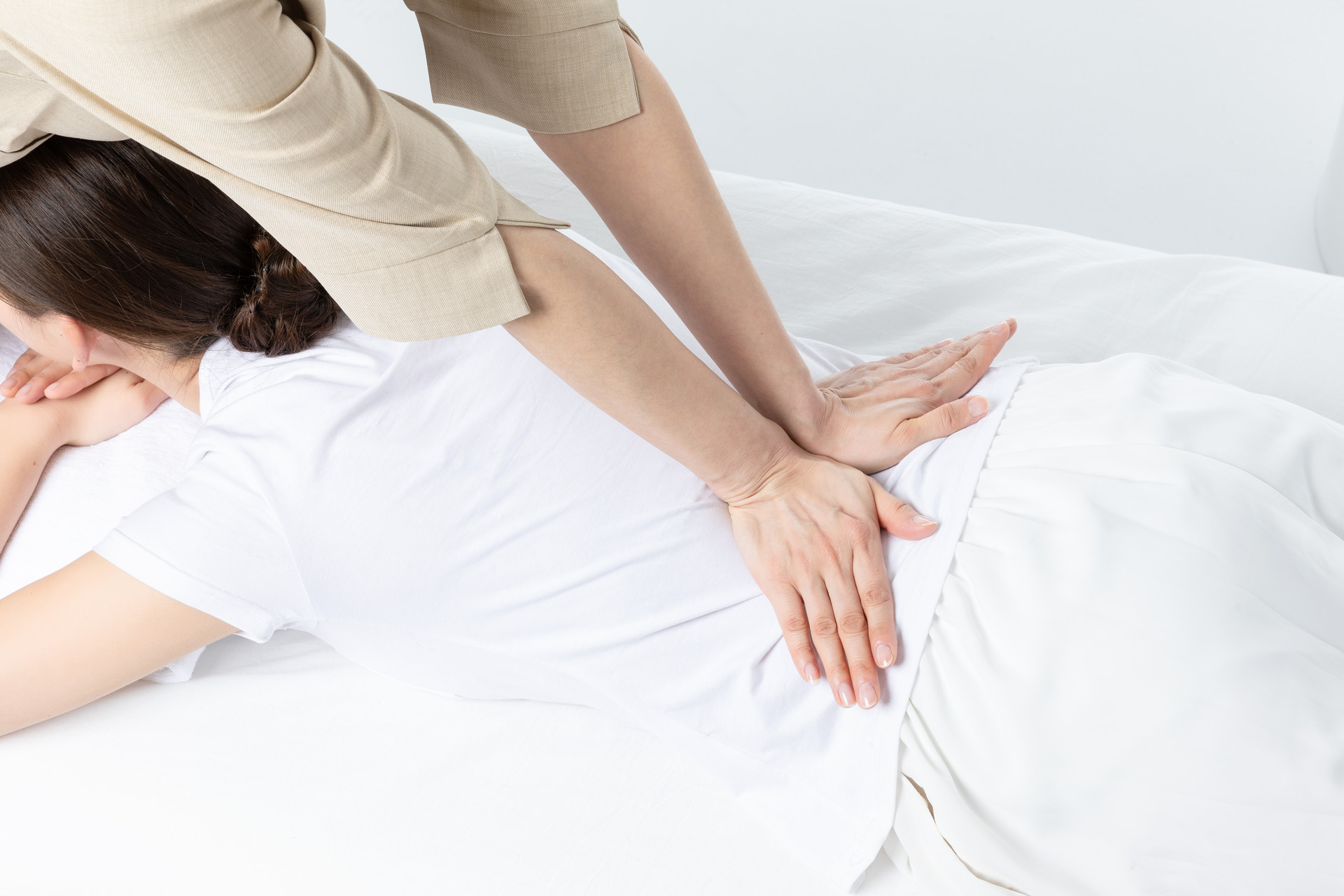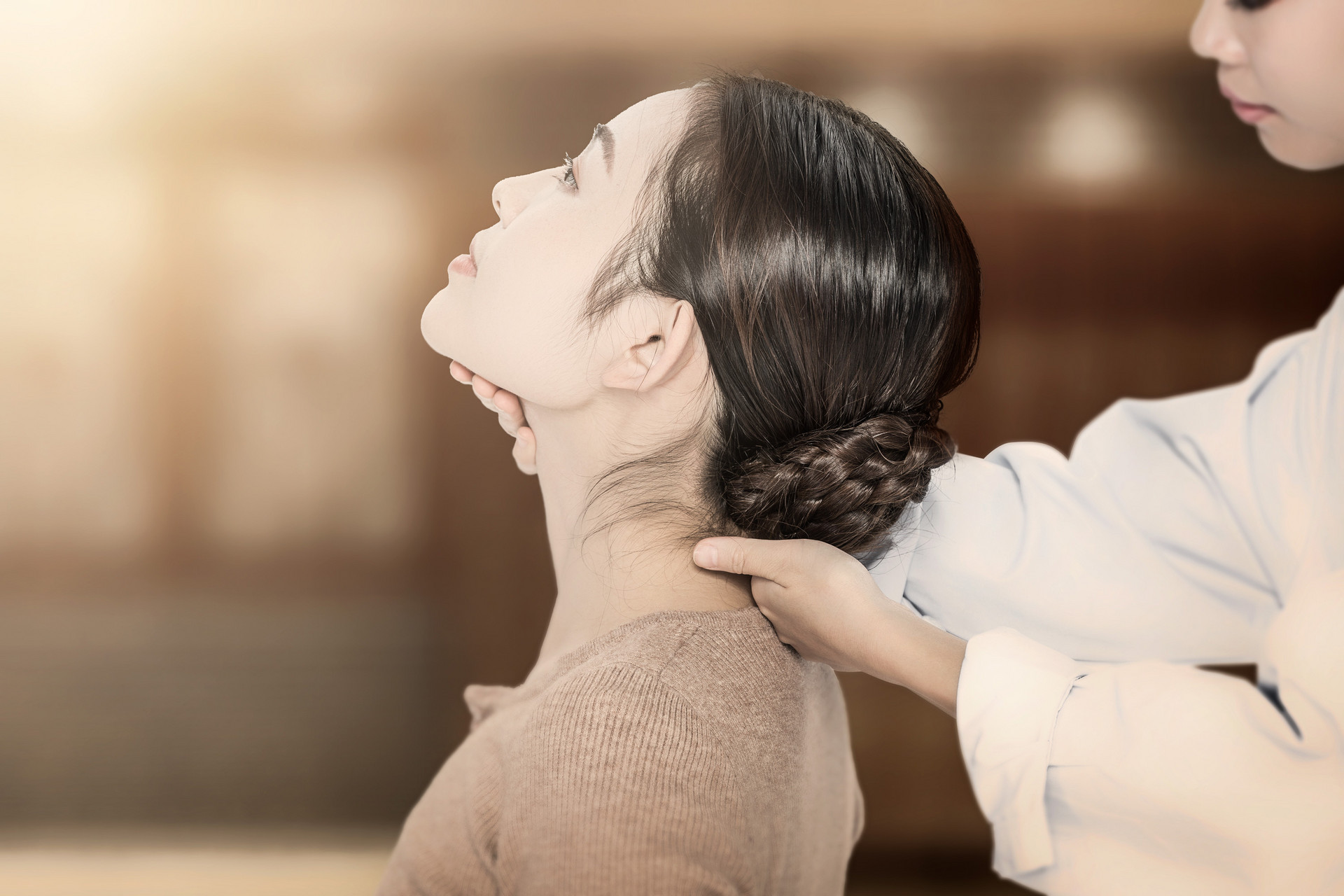1. Shaking Method
Guidelines for Action
(1) Neck Shaking: The patient sits down, and the therapist stands behind them, supporting the jaw with one hand and the back of the head with the other. The therapist then shakes the neck by applying force in a circular motion.
(2) Shoulder Shaking: The patient sits down, and the therapist stands on their affected side, supporting the shoulder with one hand and holding the wrist or elbow with the other hand. The therapist then applies force in a clockwise or counterclockwise direction to move the shoulder joint in a circular motion.
(3) Large Range Shoulder Shaking: The patient sits or stands with their upper limbs naturally hanging down and relaxed. The therapist stands in front and to the outside of the patient, with their feet in a staggered position. The therapist lifts the patient's upper limb on one side upwards and outwards, using one hand to support the wrist and the other hand to press against the upper limb. The steps are as follows: slowly lift the upper limb upwards and outwards, gradually turning the hand below, when it reaches about 160°, grip the wrist with the hand below and slide it along the forearm and upper arm to the shoulder joint, pause slightly, then coordinate the force of both hands, with the hand pressing against the shoulder slightly pressing downwards and fixing it, and the hand gripping the wrist slightly lifting it to extend the shoulder joint. Then, the hand gripping the wrist shakes it towards the back and downwards, stopping slightly at a 45° angle from below to the front and outside. At this point, the hand pressing against the shoulder has slid down along the upper arm and forearm to the wrist, forming a grip around the wrist with both hands. Then, raise the arm and rotate it through the therapist's chest to the starting position. During this process, the hand gripping the wrist gradually changes to palm support, while the other hand slides back through the underside of the wrist, crossing over to the top of the wrist joint. This is a large range rotation of the shoulder joint and can be repeated several times.
Note: When performing a large range rotation of the shoulder joint, coordinate with foot movement to adjust the body's center of gravity. When the shoulder joint rotates upwards and outwards, take a small step forward with the front foot to shift the body's center of gravity forward. When rotating downwards and forwards, take a small step back with the front foot to shift the body's center of gravity backward.
(4) Elbow Shaking: Same position as above, with one hand holding the wrist of the affected limb and the other hand supporting the elbow, performing small range circular movements of the elbow joint.
(5) Wrist Shaking: Same position as above, with one hand holding the upper part of the affected limb's wrist and the other hand holding the palm, performing small range cupping movements or shaking the wrist from side to side.
(6) Hip Shaking: The patient lies on their back, and the therapist stands on their affected side, pressing on the knee with one hand and supporting the heel with the other hand. The therapist applies coordinated force to rotate the hip joint from front to back or from back to front in a large range of motion.
(7) Knee Shaking: Same position as above, with the therapist primarily holding the heel and performing circular movements, gently shaking the knee joint.
(8) Ankle Shaking: Same position as above, with one hand supporting the heel and the other hand holding the sole of the foot, performing small range circular movements of the ankle joint.
(9) Waist Shaking: Supine Waist Shaking: The patient lies on their back, with their lower limbs together and their hips and knees flexed. The therapist places both hands on their knees or one hand on the knee and the other hand on the ankle, applying coordinated force to perform circular shaking movements.
Sitting Waist Shaking: The patient sits down with their lower limbs extended. The therapist presses on their waist with one hand and supports the shoulders slightly above the shoulder joints with the other hand. Both arms coordinate to apply force and perform circular shaking movements.
Prone Position












